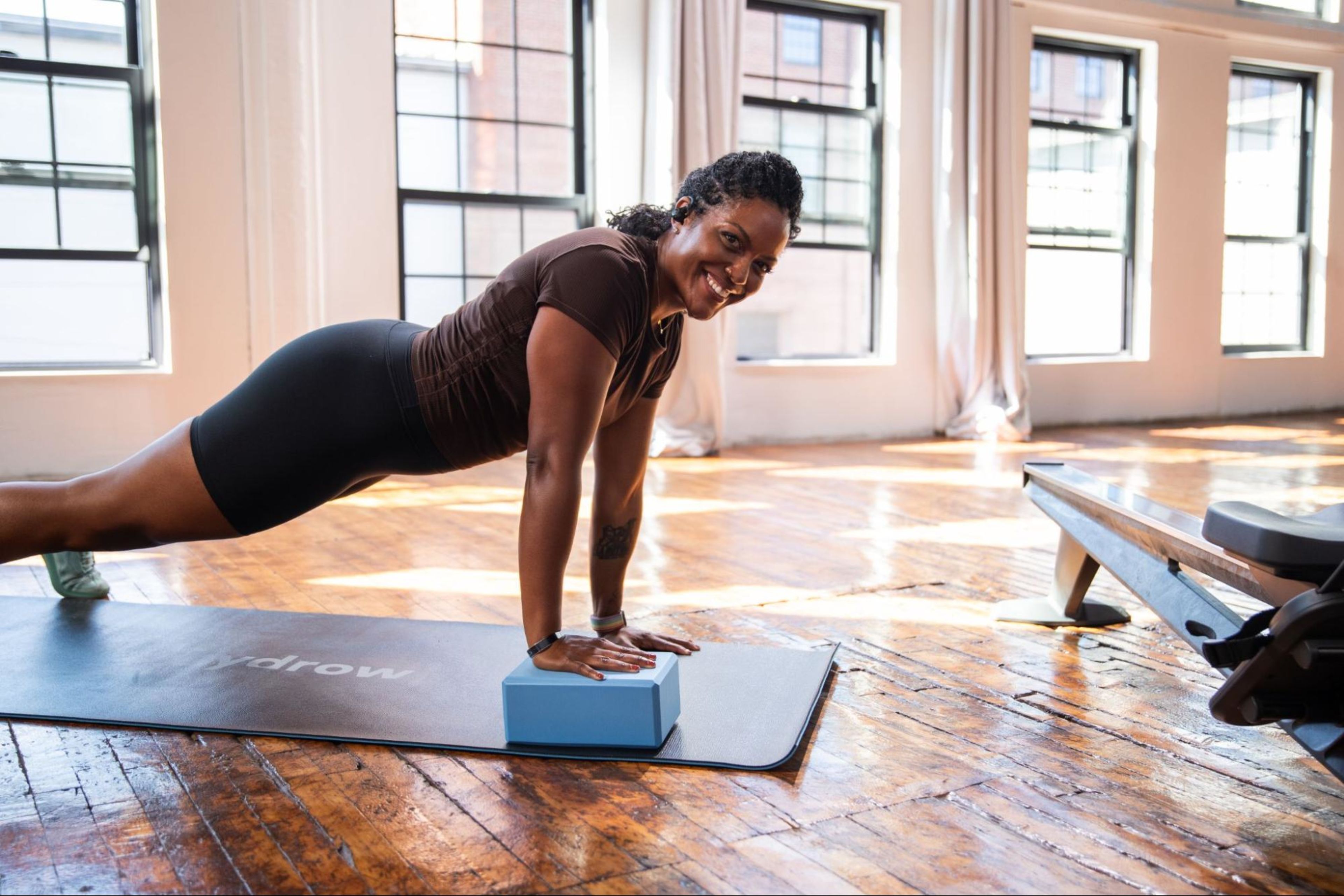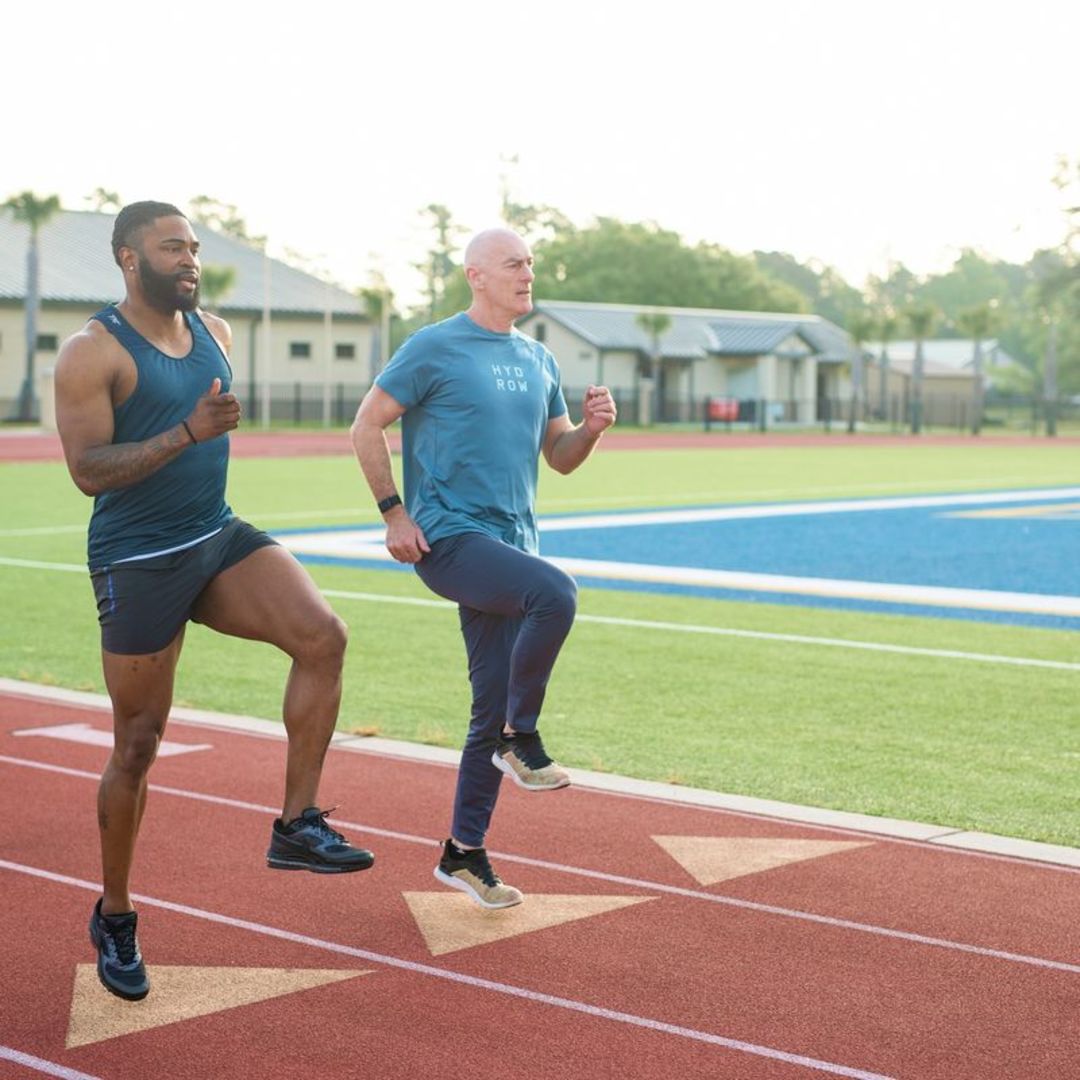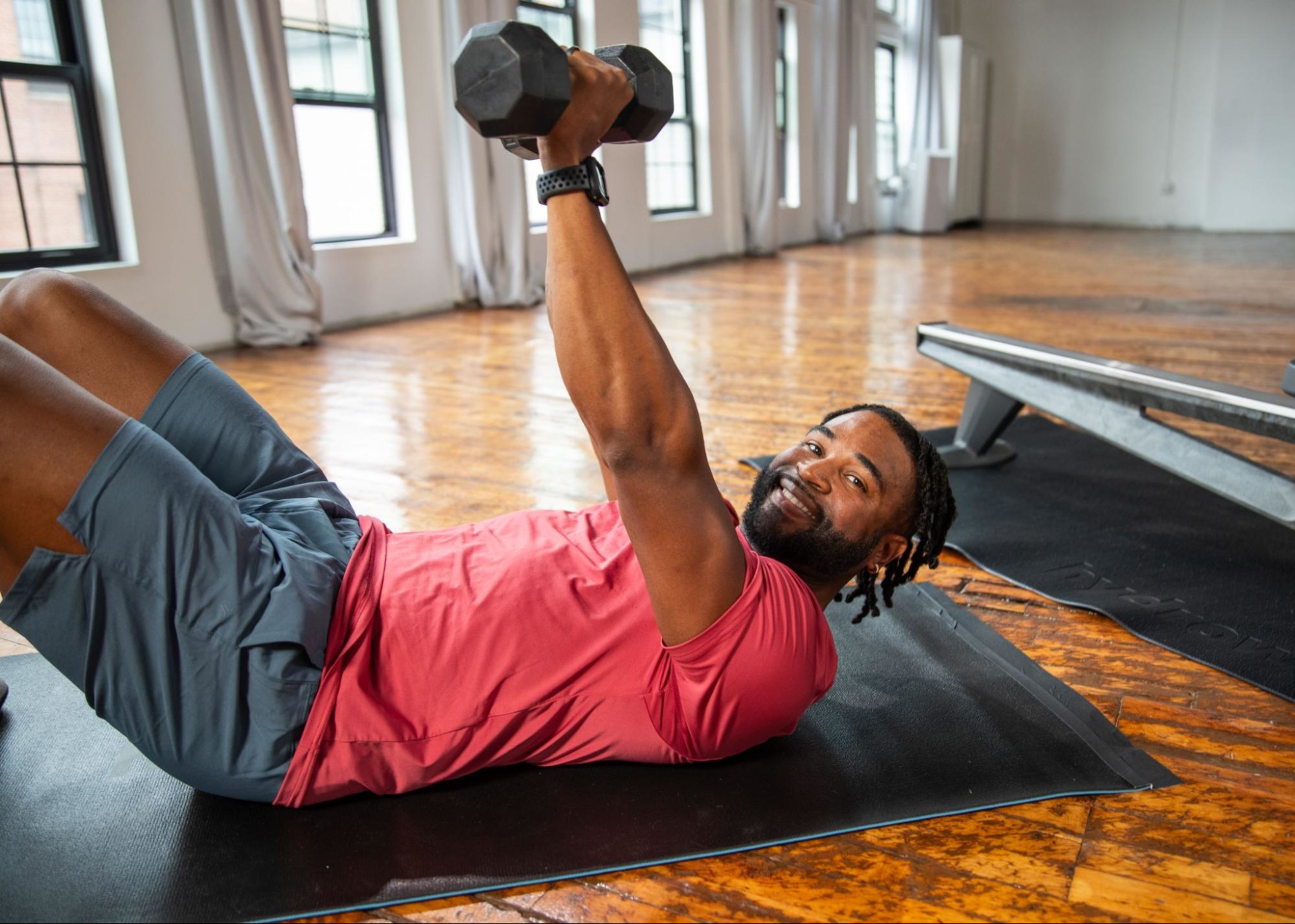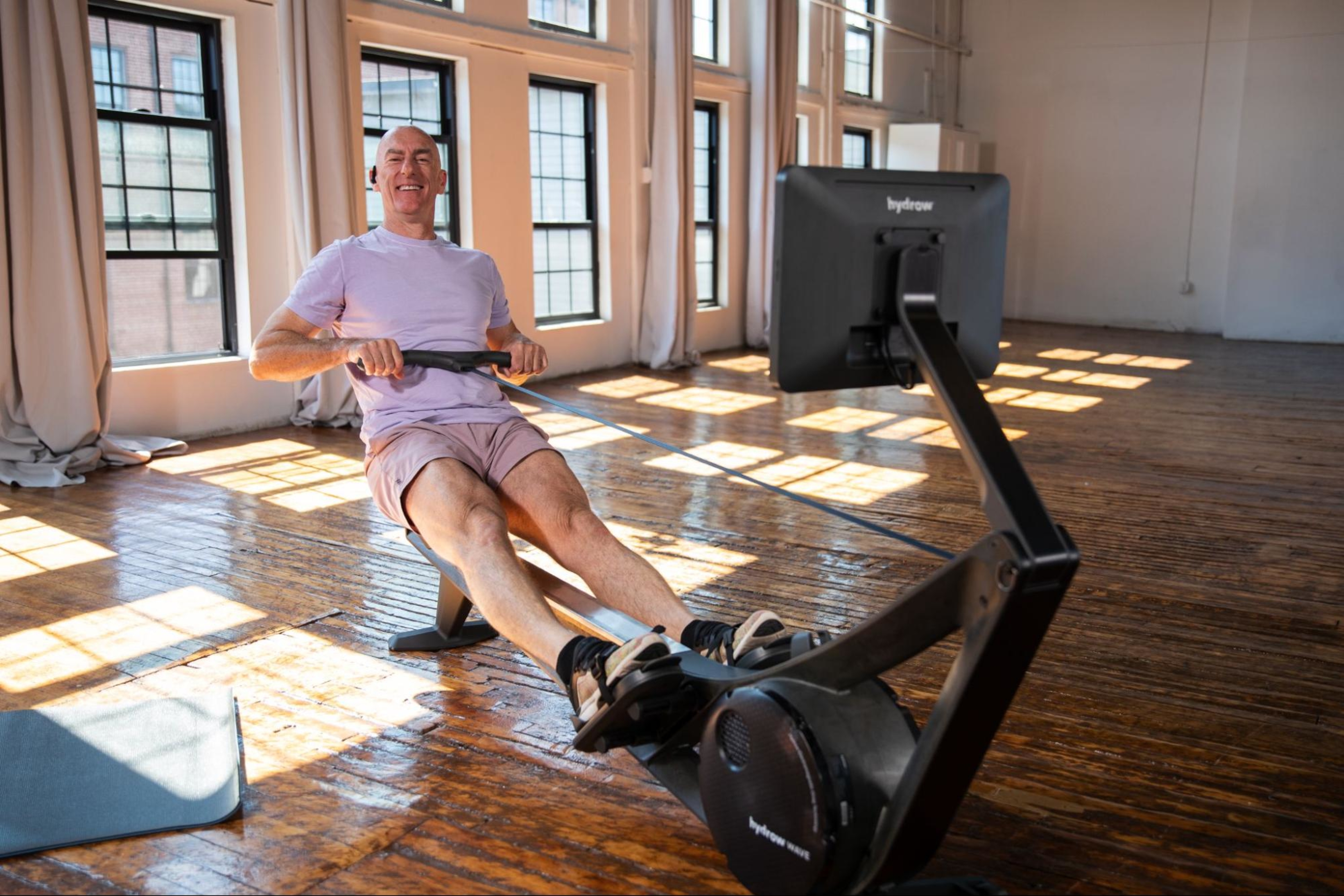Is Circuit Training Good for Weight Loss?

If you’re looking to incorporate different types of exercise into your fitness routine to help with your weight loss goals, you’ve likely heard about the many benefits of circuit training. But is circuit training good for weight loss, specifically?
In this blog, we’ll explore whether circuit training is a good type of exercise to help you lose weight—and why!—along with examples of the best types of circuit training exercises to burn fat and tips for using this type of workout to lose weight.
Let’s dive in!
Circuit training for weight loss: What you need to know
Circuit training is a type of workout that involves rotating through a series of exercises—typically targeting different muscle groups—with minimal rest between each exercise. It usually combines strength training and cardiovascular workouts, making it an efficient way to improve your overall fitness and burn calories.
If you’re looking to lose weight, circuit training can definitely be a helpful tool in your fitness arsenal. The exhaustive nature of circuit training combines high heart rates with short recoveries, making it a solid way to boost your metabolism and ultimately set yourself up to burn fat.
One very important thing to note here is that while circuit training is a fantastic workout, weight loss can only be accomplished by reducing your caloric intake (aka food). As the old adage says, you cannot out-exercise a bad diet, so it’s absolutely crucial to combine your exercise routine with a healthy diet if you want to lose weight.
How circuit training can helps with weight loss
Circuit training is an effective workout strategy for burning fat because it combines high-intensity exercises with minimal rest to maximize calorie burn, build muscle, and boost metabolism (the engine that keeps you moving throughout your day).
Let’s dive into why circuit training is particularly suited to helping burn fat:
1. Circuit training burns a ton of calories and increases your metabolism
Circuit training typically involves moving quickly from one exercise to the next to work your entire body, which keeps your heart rate elevated and drives your metabolism up. The higher your metabolism is, the better your body burns calories even when you’re not active, such as when you’re sitting or sleeping.
Losing weight requires a calorie deficit, so boosting your metabolism is key. Additionally, when your metabolism is elevated, your body is less likely to store excess calories as fat, instead using these calories more efficiently for energy.

What’s your workout style?
Take our quiz and get a customized 14-day training program.
2. Circuit training can help you get (or stay) stronger
As a full-body cardio workout, circuit training can also help you build or maintain strength, depending on your current fitness level. When you build strength, you increase your muscle fibers—and the denser your muscles are, the bigger energy expenditure you’ll experience (and the greater your metabolism will be).
Muscle tissue also requires more energy to maintain than fat, meaning the more muscle you have, the higher your resting metabolic rate (RMR) will be. This means you burn more calories even when you’re not exercising.
One thing to keep in mind as you start doing circuit training workouts is that you may not immediately see a change on the scales. In fact, you may see the number go up a pound or two because you’re stimulating your muscles! However, since you’re getting fitter, you’re setting up your body’s metabolism to increase, and that’s where your body starts to burn more fat.
In other words, try not to attach too much meaning to the number on your scale when you start working out. Instead, focus on other positive results, such as feeling stronger, moving better, and feeling like your clothes fit better.

Explore Hydrow’s library of 5,000+ rowing, circuit training, yoga, Pilates, and mobility workouts.
3. Circuit training workouts help boost your cardiovascular health
The nature of circuit training workouts makes it particularly suited to boosting your cardiovascular health. Think of your heart as a muscle: When you’re pushing your heart rate up with exercise and down with short rests, you’re building a stronger and more efficient heart than solely doing steady-state cardio in which your heart rate is kept more level.
3. Circuit training workouts are time-efficient
Many people struggle to find the time in their busy days to work out enough to see results. The great news is that circuit training workouts are incredibly efficient, meaning you don’t have to log hours at the gym to get in a good workout.
If you’re new to exercise, we recommend doing a 10- to 15-minute circuit training workout once a week alongside two steady, endurance-focused workouts and one strength training workout. Once you get more comfortable, you can extend your workouts to 20 minutes or 30 minutes.
4. Circuit training workouts feature a ton of variety
If your goal is to boost your metabolism to shift your body composition, you want to keep challenging yourself with new things. Circuit training workouts are highly customizable, meaning you can target different parts of your body with varying types of workouts. When compared to other types of cardio workouts, this can help train your body in different ways and keep you motivated with engaging workouts.
5. Circuit training workouts are versatile and accessible
Whether you’re just beginning your workout journey or are already a fitness enthusiast, there is a circuit training workout for you. Beginners are encouraged to start with bodyweight-only exercises with longer recovery periods between exercises, while more advanced athletes can add weights to their workouts and gradually increase the amount of weight over time.
The best types of circuit training workouts for weight loss
If you want to create a shift in your metabolism to set yourself up to burn fat, you want to do exercises that use large muscle groups, such as your legs, hips, and core. Doing exercises that solely work your biceps or triceps will certainly result in stronger arms but won’t necessarily shift the needle on your metabolism or your ability to burn fat.
Looking for the best circuit training workouts for weight loss? Adopt exercises that are more focused on your legs and core, such as:
Squats
Planks
Push-ups
Lunges
Deadlifts
Romanian deadlifts
Thrusters
Learn more about why these are great exercises and how to do them below:
1. Squats
As you squat, you’re moving your entire body up and down while staying stabilized, using your glutes, hips, hamstrings, quads and core. This results in a great workout across multiple muscle groups that also helps improve your mobility.
How to do a squat:
Stand with your feet slightly wider than hip-width apart, arms held to your chest, maintaining an organized posture.
Lower yourself into a squat position, hinging from the hips, then hold for a second.
Then stand back up out of the squat position.
Repeat steps.
2. Planks
The plank is a compound exercise, which means it works several muscle groups simultaneously. This increases the demand for energy (calories) during and after exercise, leading to a boost in metabolism. Planks can also be easily modified to increase intensity, so you can keep your workouts challenging as you progress.
How to do a plank:
Start face down on the floor with your forearms on the ground and your palms down. Keep your legs straight and toes resting on the ground. Ensure a straight spine parallel to the ground.
Engage your core by drawing your belly button up towards your spine.
Maintain the position 30–60 seconds, then repeat as you get stronger.
3. Push-ups
While push-ups are certainly a very upper-body-centric workout, you do have to engage your core to perform them well. As you move your entire body up and down off the ground, you’ll work your chest, shoulders, and triceps, along with your core, back, and legs.
How to do a push-up
Start in a high plank position, palms on the floor, arms shoulder-width apart and fully extended.
Bend both your elbows and lower yourself to the floor.
Push up on the palms of the hands, straightening back up to a high plank position, while maintaining an engaged core.
Repeat.
4. Lunges
Lunges are known for working your lower-body muscles but also engage your core to maintain balance and stability. Similar to other compound exercises, lunges require substantial energy output, helping to elevate your heart rate.
How to do lunges:
Stand tall.
Step forward with one leg, keeping core engaged and torso upright.
Lower your body so the back knee lightly touches the floor.
Push through the heel of the front foot to stand up.
Repeat with the opposite leg.
Perform desired reps on each leg.
5. Deadlifts
Deadlifts are especially known for being metabolically demanding, as they work multiple major muscle groups simultaneously, including your hamstrings, glutes, lower back, core, and upper back.
How to do deadlifts:
Stand close to the bar with your feet about hip-width apart under the bar
Bend at your hips and knees and grab the bar with both hands, just outside your knees
Keep your back flat, chest up, and shoulders slightly in front of the bar
Push through your heels, stand up straight, and pull the bar up along your legs until you’re standing tall.
Reverse the movement by pushing your hips back, lowering the bar to the ground while keeping your back straight.
Related blog: The 15 Best Circuit Training Workouts
6. Romanian deadlifts
Romanian deadlifts (RDLs) are a highly effective circuit training exercise, primarily targeting your hamstrings, glutes, and lower back. These are some of the largest muscle groups in the body, and working them requires significant energy.
How to do Romanian deadlifts:
Stand tall with feet hip-width apart, holding the barbell in front of your thighs with straight arms.
Hinge at your hips by pushing them back while keeping your back straight. Let the bar slide down your legs.
Lower slowly until you feel a stretch in your hamstrings (just below your knees).
Stand up by pushing your hips forward, returning to the starting position, keeping the bar close to your body.
7. Thrusters
Thrusters are a compound exercise that combines a squat with an overhead press, working your quadriceps, glutes, hamstrings, shoulders, triceps, and core. They are highly effective at increasing your heart rate and burning calories.
How to do thrusters:
Start with feet shoulder-width apart, holding dumbbells or a barbell at shoulder height.
Lower into a squat, keeping your chest up and knees over your toes.
As you stand up, push the weights overhead in one smooth motion.
Lower the weights back to your shoulders and immediately go into the next squat.
8. Rowing
If you have access to a rowing machine, this piece of workout equipment is a fantastic way to mix up your circuit training workouts. Rowing is a full-body workout that works 86% of your muscles in a single stroke, making it a highly efficient way to get your heart rate up.
Alternate between rowing at a sprint pace by doing 500 meters as fast as possible and rowing at a steady pace, such as rowing for 300 meters at a more moderate pace.

Cardio and strength, combined
Burn calories and build muscle with steady, natural movements.
Tips for using circuit training for weight loss
As we mentioned before, circuit training can be an excellent way to burn fat when combined with a healthy diet that supports a calorie deficit. As you start incorporating circuit training into your fitness routine and grow over time, keep these tips in mind to help better support your goals:
1. Keep challenging yourself
While it can be tempting to stick with the familiar and do the same workout over and over, you’ll want to continually switch up your exercise routine and ramp up your intensity to avoid hitting a plateau. For example, you could start with a shorter, 10-minute circuit one week, then then advance to a 15-minute workout the next week and a 20-minute workout the week after that.
You’ll also want to keep switching up the exercises you do to avoid your body adapting to the stimuli. Challenge your body in different ways, in different areas to maximize your results and avoid your body getting too comfortable with one type or level of exercise.
2. Get help from the experts!
While there are certainly resources out there to help you build your own circuits from the ground up and customize them to meet your needs, beginners in particular will benefit from expert guidance. Circuit training workout classes like those offered by Hydrow are great for structuring your workouts to maximize their impact, guiding you through the different exercises, and helping you level up when you’re ready.
3. Gradually increase your intensity over time
When starting a new type of exercise, it can be hard to not get excited and dive right into pushing your body to the limit. However, with circuit training, it’s important to start small and gradually increase your intensity over time.
Even if you’re doing shorter, more beginner-friendly workouts, you’re still having a positive impact on your body, and slowly ramping up your intensity will help keep you safe from injury while challenging yourself over time.

Explore Hydrow’s library of Circuit Training workouts from around the world.
4. Give yourself time to recover
Circuit training is certainly an efficient workout because it taxes your body so much in a short amount of time. But this means that you need to allow your body to recover for a couple days after each circuit training workout to avoid injury and maximize the benefits of this type of exercise. Strength and endurance exercises are excellent options for your “off” days.
5. Focus on your nutrition
Again, the key to losing weight with circuit training is to combine your exercise routine with a healthy, well-balanced diet. Eating better starts with focusing on including a variety of foods from all food groups, controlling your portion sizes, limiting processed foods, and staying hydrated.
6. Don’t get too held up with the number on the scale
While this may sound counterintuitive if you’re looking to lose weight with exercise, it’s important to look at your health and fitness more holistically than just the numbers on your scale.
Focusing solely on weight loss through an aggressive calorie deficit can push your body into an unsustainable “survival mode,” in which you’ll maybe look leaner, but have less energy, less muscle, a stiffer body, and a higher risk of injury. Eventually, your body will want to go back to what it knows, and you run the risk of losing any progress.
On the other hand, taking a slow and steady approach that focuses more on your overall health than dropping pounds can help you sustainably reach your goals. Perhaps the number on the scale hasn’t shifted too much or too quickly, but you’ll experience another host of benefits, including:
Being stronger
Having more energy
Moving better
Feeling better
Having your clothes fit better
Reducing your risk of disease
Increasing your longevity
Improving your hormonal balance
Increasing your bone density
The bottom line here is that fitness is a whole lot more than losing weight. Be kind to yourself, start slowly, and recognize the other benefits you’re experiencing beyond dropping pounds.
Kickstart your circuit training workouts with Hydrow
As you can see, it is possible to lose weight with circuit training when you exercise hard and eat well. If you’re looking to incorporate this type of workout into your fitness regimen, Hydrow’s library offers a variety of circuit workouts designed to challenge every muscle and boost your endurance. Each session is led by a world-class Athlete who provides clear, motivating guidance to help you get the most from every movement.
Explore Hydrow’s circuit training workouts and take your fitness further.

Real strength keeps moving
Learn how working out with Hydrow can help support a fuller, more active life.








